This is the weekend edition of TheMarioBlog and will be updated as needed. Because of the Labor Day Weekend holiday in the US, the next blog post is Tuesday, September 2.
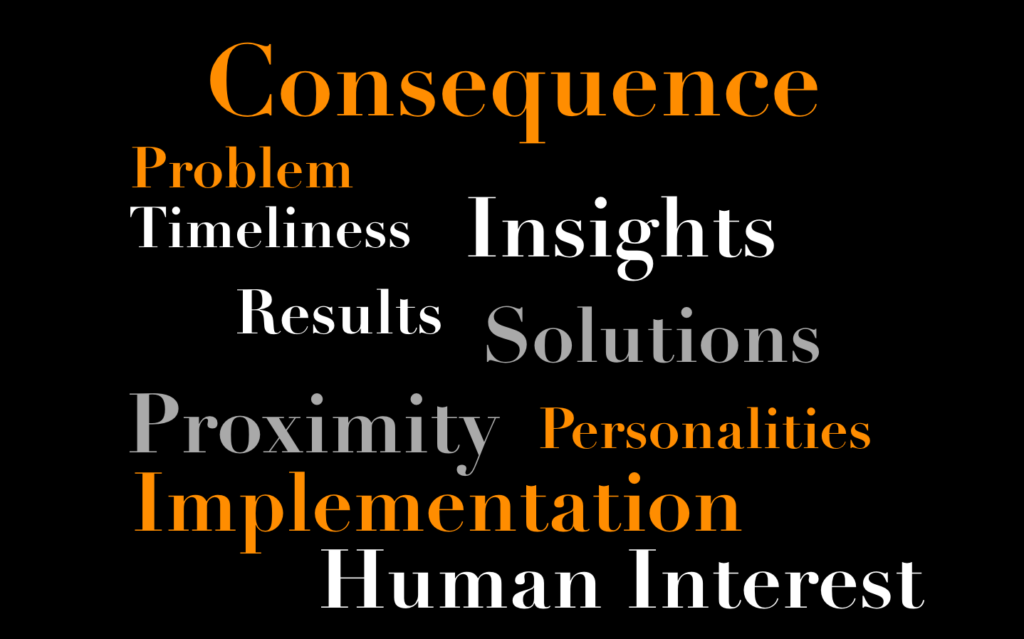
Here is a timely piece from the Nieman Lab which offers a blueprint for how news should be presented.
Ironically, it makes me rethink a topic which has been front and center in my workshops lately. As it happens, I find that many of the young journalists who sit in my workshops globally are fascinated by my mention of the old news determinants, those that we find in very old news writing books long extinct. Apparently, the subject of “news determinants” does not come up in current journalism classes.
So, just in case you don’t know what I am talking about, let me mention my list of news determinants that should help every editor make decisions about news agenda setting.
The standard news determinants
Consequence—how many people are affected from an event. The greater magnitude means highly valued news as it effects higher number of people
Proximity—geographic and psychological.
Timeliness—nearness in time
Human Interest—Especially if conflict takes place, chances are news follows. Stories such as elections, sports, man vs. man conflict news .
Personalities—News about important personalities like any celebrity is valued and this factor determines news.
So what? —Why should this story be published?
My list above is inspired by a variety of sources, but, most importantly by what is probably the first News Writing textbook ever written (1909 and published in 1917) by Lyle Spencer. By the way, you can still download this book free.
Mr. Spencer summarized news determinants as follows:
“……it may be said that the only requirements of an event or an idea to make it good story material are that it be presented accurately and that it possess interest for a goodly number of readers; and any fact or idea which presents a situation or poses a problem differing, even slightly, from preceding situations or problems encountered by the readers of a paper is sure to possess interest. Timeliness is of vital worth, but is not a necessity. The geographical nearness of an event adds to its value, as does the fact that the event or the product or the result is a record breaker or is unique in its class. Contests of all sorts invariably possess interest, and stories of the helplessness of old persons, children, or animals never fail to have an emotional appeal. Any news item concerning a well-known person or place is likely to attract attention, and any story that touches the home or business interests of the public is sure to command interested readers. All these features are valuable, and any one will contribute much to the worth of a story, but none is essential. The prerequisite is that the news shall be true and shall present a new situation or problem, or a new phase of an old situation or problem.”
The new news determinants?
While the old news determinants are still all sound and good guidelines for content managers selecting stories, I am fascinated by what the Nieman Lab people have found out in their research with readers.
Here is an introduction to their piece introducing the new concepts:
More often than not, the news sucks. It’s depressing and disappointing (but hey, so is real life sometimes), and it’s clear that the negative Nellie Blys of the world help push away potential news consumers who can now easily scroll away from a scary headline or recoil from TV news airing in public.
Almost a third of people surveyed worldwide for the Reuters Digital News Report said they “often or sometimes” avoid the news. Why? The leading cause for Americans avoiding news in 2017 was “It can have a negative effect on my mood” (57 percent) and “I can’t rely on news to be true” (35 percent).
And the new determinants which every journalist should observe:
- Problem: The causes and symptoms of the issue
- Solution: The replicable ideas tied to solving the problem
- Implementation: The how-to details of putting the solution into action
- Results: The progress, data-based or anecdotal, that has been made in working toward a solution
- Insights: The teachable, big-picture lessons that can be learned beyond one particular solution or situation
My take
It makes perfect sense that in the digital age, with a 24/7 news cycle, audiences already get a guarantee of proximity and timeliness every time they turn to their smartphones. Many of the stories they find there they already know something about, total proliferation of news that everyone publishes, that everyone knows something about.
That is why stories that present a problem, offer solutions, discuss implementation and, if possible, lead to the results and offer insights, are going to be important to readers.
I have seen this myself with the recent coverage of the trade war between the United States and China. It is a story with consequence (we all may pay more for goods), proximity (hits our pockets no matter where are are in the planet), timeliness (negotiations are taking place as we read the story), personality (President Trump, need I say more?). Indeed, there is human interest if we take into account that the President of the United States considers himself the master of the deal, so will he be able to strike a deal this time? Add conflict, since the Chinese are not going to be easy to negotiate with. That’s for the old news determinants.
As for the new: I am interested in reporting that offers insight and analysis, as I am quite familiar with all the other aspects of the story. I want to read about the “big-picture lessons that can be learned beyond one particular solution or situation”.
The Nieman article concludes with this statement:
It’s no inverted pyramid, but it’s pretty straightforward. Bring readers all onto the same playing field of context about an issue, and don’t just cut away to the solution when they don’t understand the stakes for it. (At the same time, of course, don’t drag it out so much that they leave before getting to it.) And follow through with more details for what it actually looks like.
My interview with CNN en Español
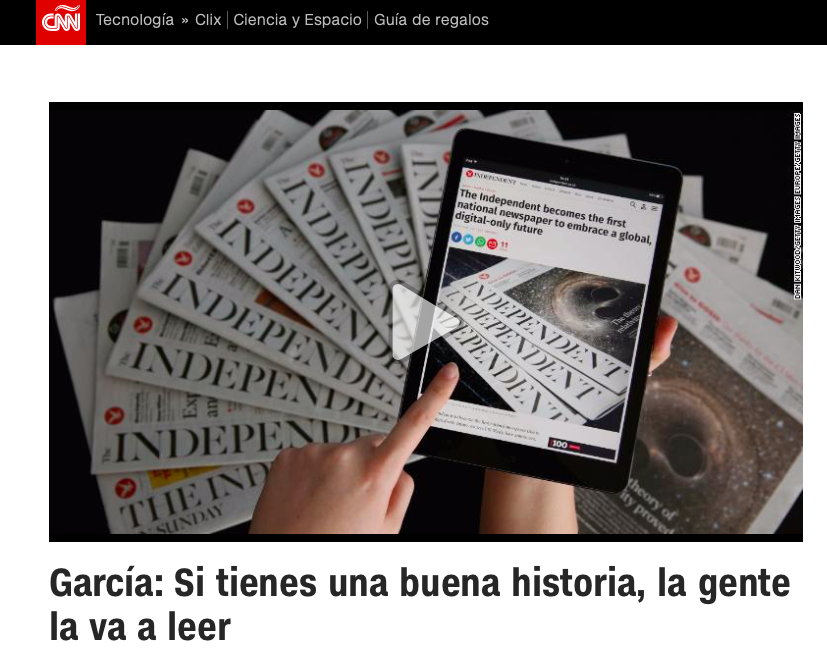
I was a guest in the program Encuentro, hosted by Guillermo Arduino daily at CNN en Español. The interview was about how we read on mobile devices and my introduction of my new mobile storytelling book, The Story, to a Spanish-language audience.
Mario’s speaking engagements

Keynote Luncheon Speech: Ad Club of Toronto, Newspaper Day
October 25, 2019

Keynote presentation: Business Information & Media Summit (BIMS).
November 12, 2019
Order print edition of The Story from Amazon
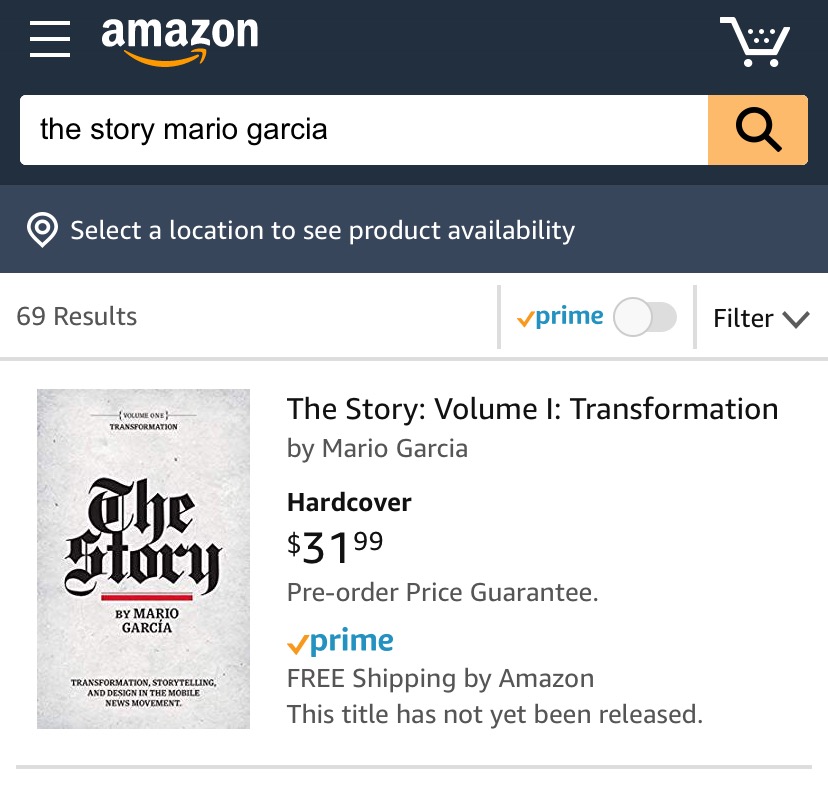
You can order the print edition of my new mobile storytelling book, The Story, from Amazon already here:
Pre-order The Story
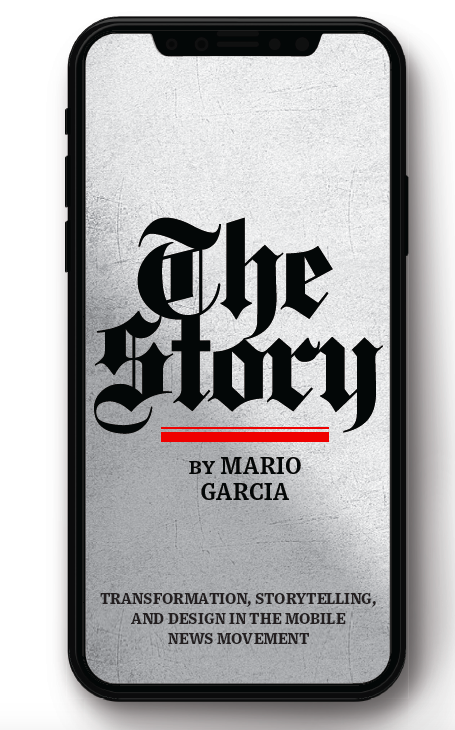
The newspaper remains the most powerful source of storytelling on the planet. But technology threatens its very existence. To survive, the Editor must transform, adapt, and manage the newsroom in a new way. Find out how, pre-orderThe Story by Mario Garcia, chief strategist for the redesign of over 700 newspapers around the world.
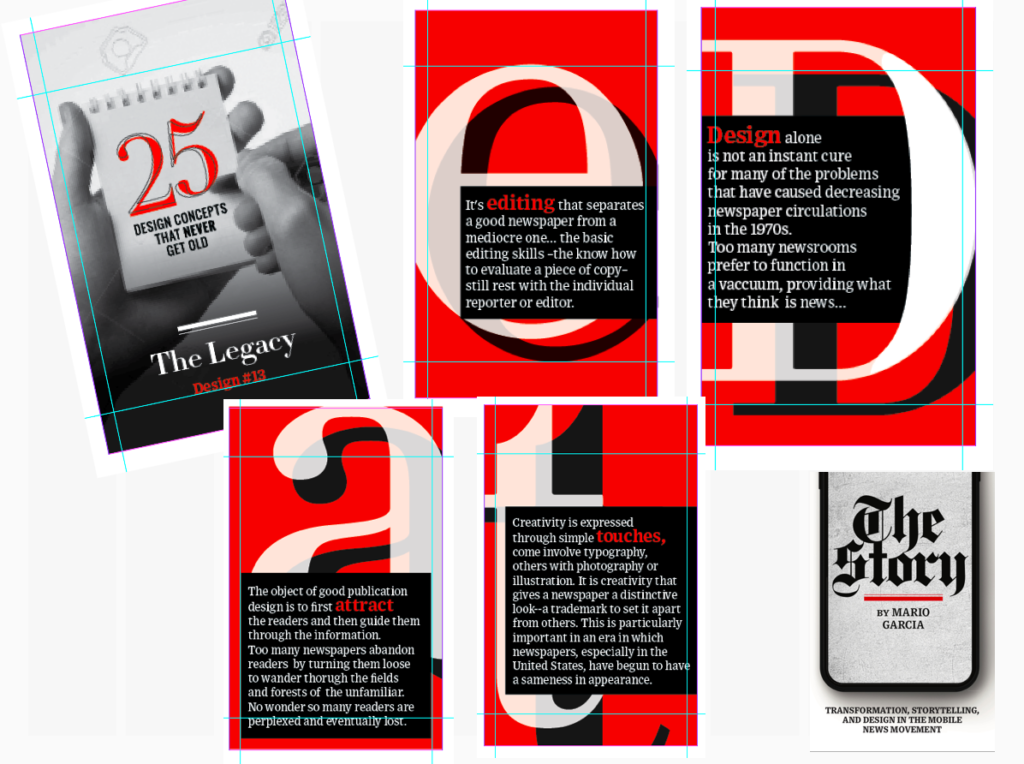
Order here:
https://thaneandprose.com/shop-the-bookstore?olsPage=products%2Fthe-story

The Story will also appear in print
I am happy to announce that we will, indeed, have a print edition of my mobile storytelling book, The Story. I thank you for expressing your interest to our publisher, Thane Boulton, of Thane & Prose. Now the print edition will be a reality, and you can already see the cover and back cover here:
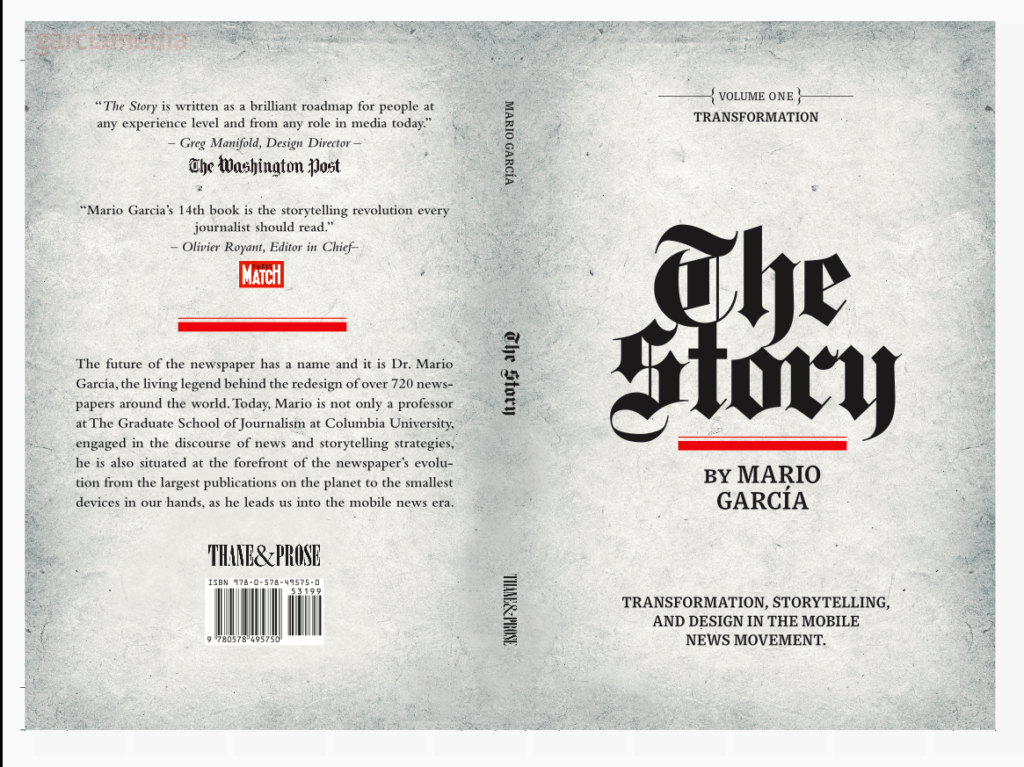
An interview of interest
http://www.itertranslations.com/blog/2019/3/11/fd60ybflpvlqrgrpdp5ida5rq0c3sp
TheMarioBlog post # 3103